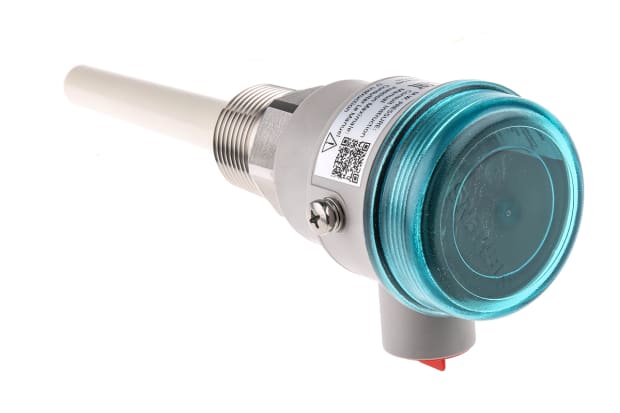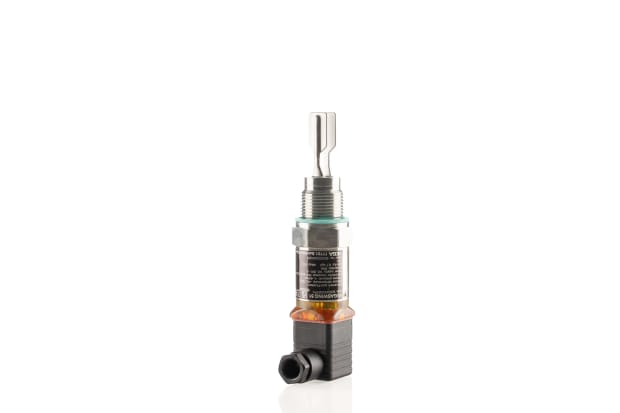- Published 24 Jan 2023
- Last Modified 29 Aug 2023
- 6 min
Everything You Need to Know About Level Sensors
We look at what level sensors are, what types and sizes are available, and the different uses of level sensors.

What are Level Sensors?
Level sensors are components used in fluid control systems to determine the level of a tank or container. They can determine the levels of different types of free-flowing media such as liquids, powdered solids, and granular solids. They provide an electrical signal which automatically communicates when connected control valves should be opened or closed.
Depending on the specific level sensor, this could be either an output proportional to the level, or an output programmed to be given at a pre-set level or value.
Level sensors play a key role in fluid control systems. Having an accurate understanding of the current position, level, and displacement of a substance is imperative in a wide range of applications and environments, meaning that the importance of the level sensor should not be overlooked.
How Do Level Sensors Work?
There are multiple types of level sensors, and each type uses a different method of gauging the level of media within the tank or container. This means that varying types of level sensors work in different ways, using distinct technologies and processes to complete their measurements.
Level sensors can be categorised as either contact or non-contact, depending on the specific type. The methods used to determine fluid levels are explored below by type – here is a handy overview:
- Optical Level Sensors – visible, laser, or infrared light
- Capacitive Level Sensors – non-contact sensing fields
- Conductive Level Sensors – electrical contact outputs
- Vibrating Level Sensors – high-frequency vibrations
- Ultrasonic Level Sensors – ultrasonic pulses
- Microwave Level Sensors – electromagnetic energy
Types of Level Sensors
There are various types of level sensors available, each best suited to different uses and applications. Characteristics and specifications also vary between the different types, meaning that there are several determining factors when it comes to choosing the best type of level sensor for your requirements.
These factors include:
- What substance will be measured
- Where the sensor will be used
- What position the sensor needs to be mounted in
Some of the most common types of level sensors are explored in greater detail in the sections below.

Optical Level Sensors
Optical level sensors are simple yet reliable, making them a common choice for many applications. They rely on various forms of visual sensing to determine the level of the media. Depending on the specific sensor, they can use either visible, laser, or infrared light.
Beams of light are generated towards the surface of the substance. The sensor then works by recording instances of the light reflecting or refracting off the surface, which is achieved using one or more photocells. The response is almost instantaneous and accuracy levels are high with this type of sensor.

Capacitive Level Sensors
Capacitive level sensors offer simple level readings, indicating if the container is empty or full. These basic indications are determined by the position that the sensor has been mounted in, making accurate positioning imperative.
This type of level sensor is non-contact, meaning that they use sensing fields to read the level of the substance within the container. Capacitive level sensors are advantageous as they offer highly accurate sensing even with a heavy build-up of residue on the sensor.

Conductive and Resistive Level Sensors
Conductive level sensors, also known as resistive level sensors, feature probes which measure substance levels. These probes are usually made from stainless steel. Conductive level sensors work by using electrical contact outputs to determine substance levels, via the steel probes. It is also possible to use them alongside level control relays to determine pre-set levels and monitor levels remotely.
Highly accurate and precise, conductive sensors are often used by professionals. This type of level sensor is used for measuring liquids and typical applications could include reservoirs, tanks, ponds, and sumps, as well as pharmaceuticals.

Vibrating and Tuning Fork Level Sensors
Vibrating level sensors are also known as tuning fork level sensors because they typically feature a fork or rod. This component constantly produces high-frequency vibrations. Once the substance and the tuning fork are in contact with one another, the contact causes the vibration to change which is used to determine substance levels by the sensor.
In addition to their indication uses, these sensors can also be used as overfill protection devices. Vibrating level sensors are primarily used to determine liquid levels, but they are also suitable for use with granulated and powdered bulk solids.

Ultrasonic Level Sensors
Ultrasonic level sensors offer an alternative method of determining the level of a substance. Due to their method of sensing, they are only suitable for use with liquids.
These sensors work by generating ultrasonic pulses, which reflect off the surface of the liquid being measured. To determine the level of the liquid, the sensor then calculates the time taken by the ultrasonic pulse to travel to the surface and back to the sensor. Although ultrasonic level sensors are highly accurate in practice, in reality, this is not always the case as the sensor’s response can be influenced by several external factors such as pressure, temperature, turbulence, and moisture levels.

Microwave and Radar Level Sensors
Microwave level sensors, also known as radar level sensors, use electromagnetic energy for their measurement. This enables them to work in extreme temperatures and penetrate multiple layers of vapour, as well as being suitable for use in vacuums.
These sensors are typically used with metal and conductive water, as the media must have high conductive properties for the electromagnetic energy to reflect efficiently. These sensors can also be used at different frequencies for different applications and levels of accuracy.
Level Sensor Uses and Applications
Level sensors can be used in a wide range of different applications. They are important pieces of equipment and are commonly found in a variety of industrial processes and environments.
Many processes which involve media in tanks or containers find the use of level sensors advantageous. These sensors can manage and monitor flow rate, provide accurate data, and be incorporated into larger fluid control systems. Their uses are myriad; just a few examples include media level sensing, detecting leaks, acting as an alarm system, providing overfill shutoff, and regulating media interface between multiple levels or substances.
Level sensors are used in many industrial applications, including industries as diverse as the following:
- Food and beverage
- Pharmaceuticals
- Medicine
- Energy management
- Manufacturing
- Chemicals
- Marine environments